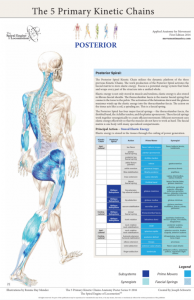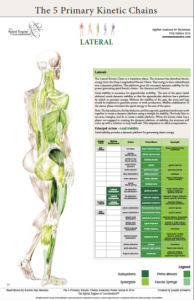Every so often I get requests from other clinicians to review their product(s) or course(s).
I rarely say yes. Actually I always say NO.
As you all know I tend to be skeptical of many claims, theories, algorithms of rehab or cures. I’m even skeptical of my own content most days which is why I continually incorporate as much published research as possible into my teachings.
We have come out of a time where taking an educators word as gospel was the norm. Today we demand that their teachings/theories/concepts be based on scientific documentation. Joseph Schwartz’s work on the 5 Primary Kinetic Chainsis based on the research of Grey Cook, Stephen Braybrook, Andre Vleeming, Serge Gracovetsky, Graham Scarr and others. His knowledge of Biomechanics and Biotensegrity can be seen in his writing and his work development.
Clinicians today are changing people’s lives. We have the opportunity to act as rehabilitative tipping points in a patient’s life to help them resolve the physical issues they present to us. These issues when looked at as a local issue can seem simple and basic, but to those who see the issues from a systemic perspective, these basic issues become profound that potentially can contribute to and develop into long lasting seemingly unrelated compensations.
Clinicians must continue to develop the skill of stepping outside their current bias and see through different eyes. Your current bias is based on many aspects; your level of past and current education, your main area of interest, previous patient treatment experience, your own personal experience rehabbing from an injury, the influence of others perspectives and their past/current education and so on. Joseph is one of those clinicians who not only has the vision to see with a different perspective, but who is also helping other clinicians broaden their perspective and challenge their bias.
There is a saying “The time you want the map … is before you enter the woods.”
Before you embark on any journey, know in advance how to get where you want to go. Otherwise, you start doing something and then end up all lost and confused. This is where Joseph’s 5 Primary Kinetic Chains act as a map to help you.
Sometimes a patient presents with an issue that is local and simple and a clinician can assist the patient in resolving it quickly. But what do you do when a patient presents with an issue that they have been living with for a decade or more? Joseph has taken what could be a frustrating journey and simplifies it for the clinician.
The 5 Primary Kinetic Chains are great maps/templates for assessing gait and movement. Joseph breaks each chain down into Subsystem, Action, Prime Mover, Synergist and Fascial Spring. Along with this information, Joseph also includes information on force transmission systems, sling systems, breath, shock absorption, axial stability, generation and translation of Stored Elastic Energy. This is where his knowledge of Biomechanics and Biotensegrity shine. The clinician can quickly assess and determine what is functioning well, what is dysfunctional.
Having this information in a visually stunning format in your clinic will assist you in providing a logical direction of treatment based on research, while educating your patient. This information could help you connect many dots and better identify the systems and structures that play a critical part in creating the rehabilitative tipping point for your patient.
Check out the chains.
Leave a Reply